Whether called lemon balm, lemon-scented herb or simply citronella, Melissa officinalis hides many aromatic, gustatory and even medicinal assets. This perennial herbaceous plant also benefits from rapid growth and good vigour, which can make it somewhat invasive in vegetable garden. However, its bright green leaves, fresh or dried, offer many possibilities: tisanes and infusions, salads, or small sachets to scent wardrobe linen.
For summer, here is a very simple lemon balm syrup recipe. Enjoy with ice, stretched out on a deckchair, in shade of your favourite tree.
To learn more: Lemon balm: sowing, planting, cultivation
What exactly is lemon balm?
Melissa officinalis is a perennial, herbaceous and aromatic plant. When crushed, leaves give off a delightful lemon scent. Known since Antiquity for its medicinal virtues, this easy-to-grow plant produces bright green, slightly downy leaves. Both useful and ornamental, this plant finds its place in borders or even in vegetable garden. Provided its vigour is kept in check, because lemon balm can quickly become invasive. It is indeed equipped with long rootstock and self-seeds without any difficulty.
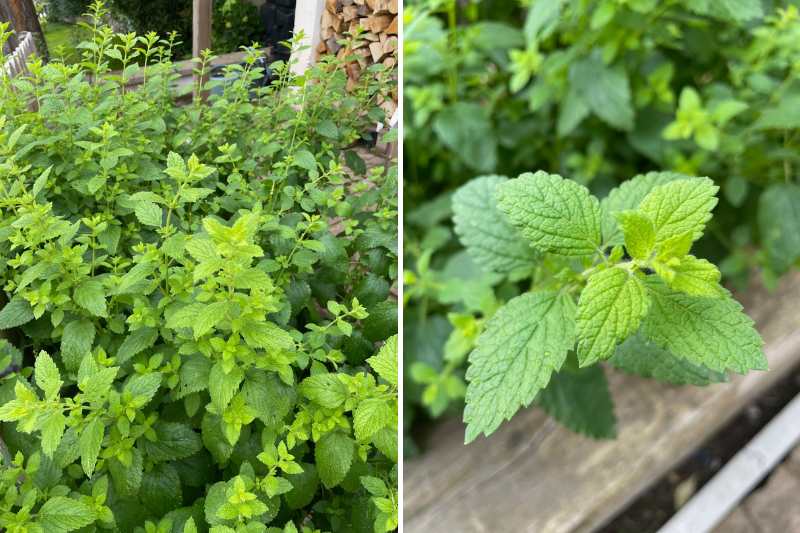
That is why anyone who plants a small young plant of lemon balm soon ends up with a handsome upright, bushy clump, very ramified, about 80 cm high and almost as wide. A plant valued too for its mosquito-repellent properties. Or its melliferous qualities. From June to September, flowers, white or slightly pink, indeed appear and open along stems, in axil of leaves.
Hardy down to at least −20 °C, lemon balm can be grown everywhere, in sun or partial shade, in ordinary, rich and fresh, deep and well-drained soil.
When and how to harvest lemon balm?
Ideally, harvest of lemon balm leaves is done before flowering, from March to mid‑June. To capture all their freshness and aroma, it is best to harvest leaves early in morning. Harvest is done simply using a pair of scissors or a pruning shear.
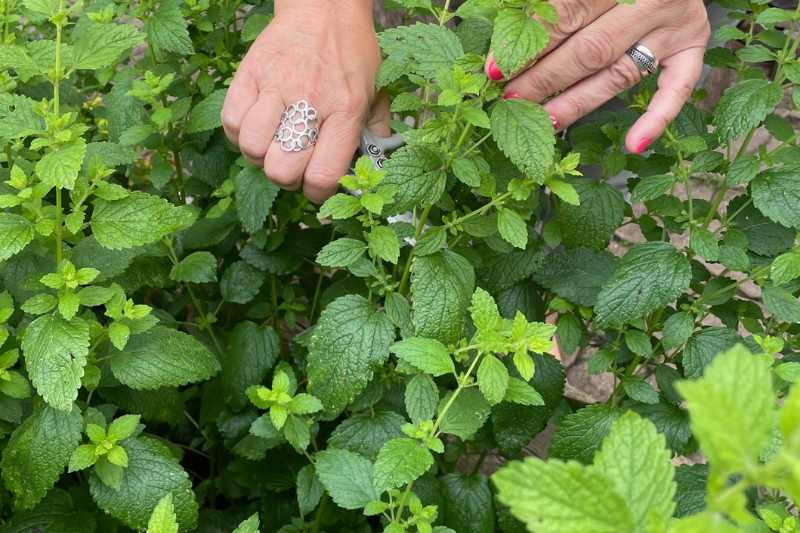
A second harvest is possible between end of summer and start of autumn, in September.
Lemon balm syrup recipe
Ingredients
For about 80 cl of lemon balm syrup, you will need:
- 70 g lemon balm leaves without stems (to do this, cut stems with pruning shear and strip leaves, keeping most beautiful and tender leaves)
- 1 l water
- 500 g white sugar
- 100 g brown sugar
- Juice of half an organic lemon.
Method
Start by sterilising your bottle: boil a saucepan of water, then immerse bottle completely. When water returns to the boil, count 10 minutes. Then let bottle drain and dry on a clean tea towel.
- Bring litre of water to the boil in a large saucepan.
- Add lemon balm leaves, whole or chopped, previously rinsed, and juice of half lemon.
- Remove saucepan from heat and cover with lid.
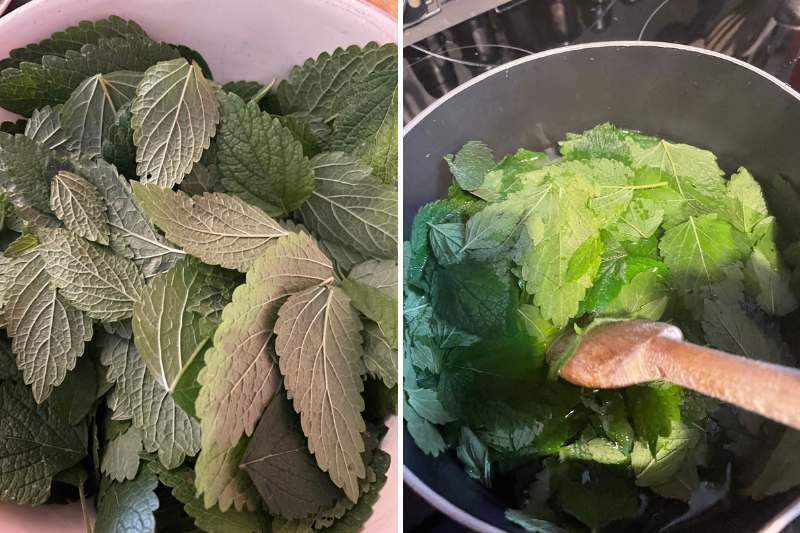
This preparation will infuse for 24 hours. It is preferable to keep it cool, for example in garage.
- After 24 hours, filter lemon balm–infused water through a sieve.
- Squeeze leaves by hand to extract juice. Pressed leaves can of course go to compost.
- Add both sugars to lemon-scented water and stir to dissolve.
- Bring to the boil, stirring occasionally, and simmer for 12 to 15 minutes maintaining a gentle boil.
- When syrup is cooked, leave to rest in saucepan for one hour.

Final step is to pour lemon balm syrup into a pretty bottle with airtight cap. Make sure to let it cool completely before placing in refrigerator.
Storage of lemon balm syrup
Unlike commercial syrups, lemon balm syrup contains no preservatives. However, juice of half a lemon, by its acidity, helps prevent syrup from degrading too quickly. Nevertheless, it is essential to store it in refrigerator.
Stored in good conditions, this syrup keeps for about two months unopened. Once opened, it should be consumed within one month. At slightest sign of cloudiness or off smell, discard.
How to use this lemon balm syrup?
This homemade lemon balm syrup is prepared as with commercial syrup. Simply mix one part lemon balm syrup with 6 to 8 parts water. Add ice and enjoy a refreshingly lemony break. Lemon balm syrup is also delicious with lemonade.
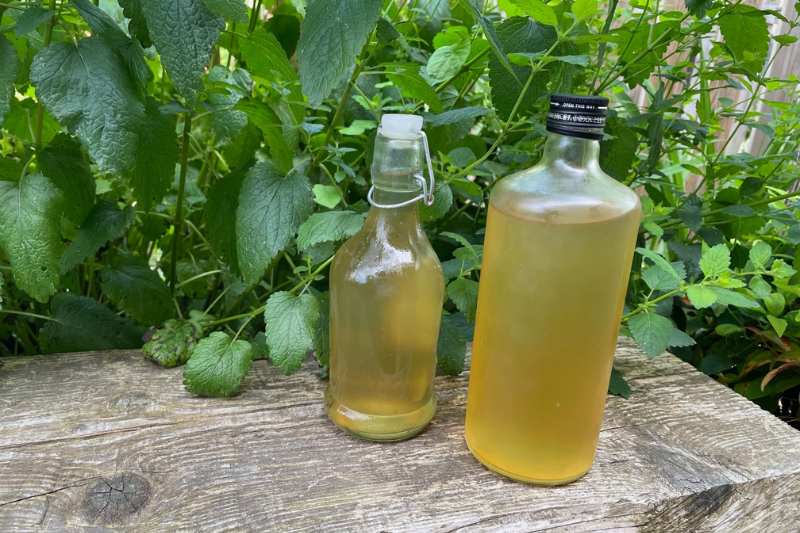
This syrup can also be used in cocktail recipes.
Variations
- To taste, you can slightly adjust sugar quantity by about 100 g more or less.
- To add a touch of freshness, feel free to add a few mint leaves to lemon balm during infusion. Basil leaves also work very well. It is also possible to make this lemon balm syrup by incorporating elderflower during infusion. Similarly, add a clove or a little cinnamon.































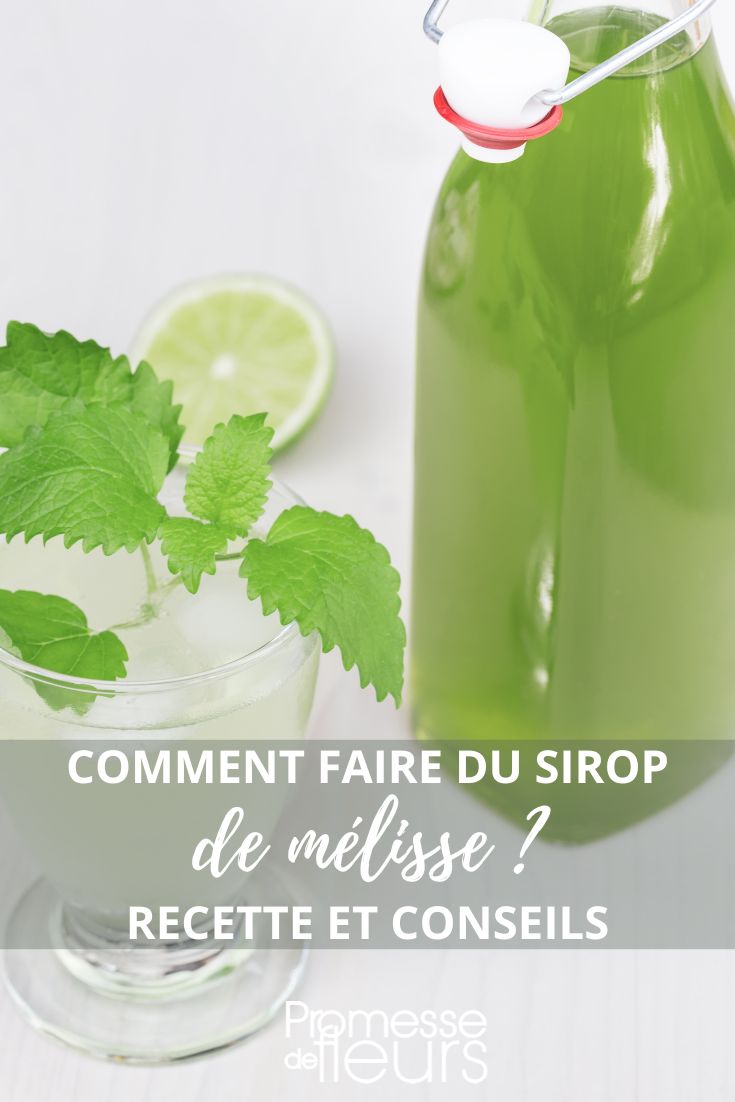
Feedbacks